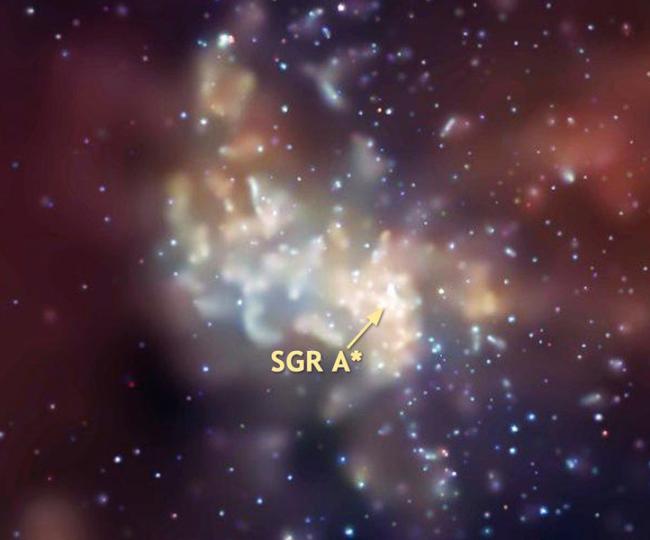Inside Black Holes - Three recent black hole events and how they shape our universe

A combination of infrared and X-ray observations indicates that a surplus of massive Stars has formed from a large disk of gas around Sagittarius A*.
Near the middle of the Milky Way, there lives a supermassive black hole called Sagittarius A* (Sgr A) that any day now might eat a gas cloud (called G2) that’s floating towards it at 5 million miles per hour. Here on earth, we have a front row seat to this extremely rare galactic event that will have ripple effects throughout our galaxy.
“As it veers toward the black hole, the doomed cloud will shred and stretch into a piece of string over 100 billion miles long,” explains Dan Evans, an astronomer at the Harvard-Smithsonian Center for Astrophysics in Boston. Evans spoke at Smithsonian’s Future Is Here conference today and gave attendees a tour of black hole events in our galaxy.
First, what exactly is a black hole? It’s a spot in space where a huge amount matter is extremely compressed and the gravitational forces around this spot of matter are so strong that they trap light, hence the name. “Black holes are extremely simple and extremely powerful,” he says. Astronomers characterize black holes based on three key factors: mass, spin, and electrical charge. On the other hand, a black hole feeding on matter emits the same amount of energy as one billion trillion hydrogen bombs per second.
Related News
CfA Scientists Play Important Role in New NASA Mission
Runaway Stars Reveal Hidden Black Hole In Milky Way’s Nearest Neighbor
CfA Celebrates 25 Years with the Chandra X-ray Observatory
CfA Astronomers Help Find Most Distant Galaxy Using James Webb Space Telescope
Unexpectedly Massive Black Holes Dominate Small Galaxies in the Distant Universe
Distant Stars Spotted for the First Time in the Vast Magellanic Stream
CfA Scientists Help Reach New Milestone in Quest for Distant Galaxies
Astrophysicists Hunt for Second-Closest Supermassive Black Hole
The Tilt in our Stars: The Shape of the Milky Way's Halo of Stars is Realized
JWST Draws Back Curtain on Universe's Early Galaxies
Projects
2MASS Redshift Survey
AstroAI
Dark Energy Spectroscopic Instrument (DESI)
GMACS
For Scientists